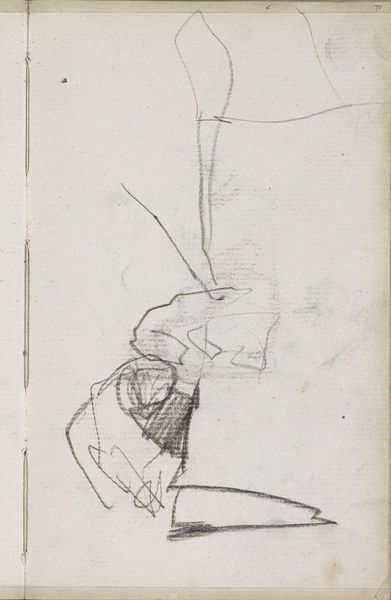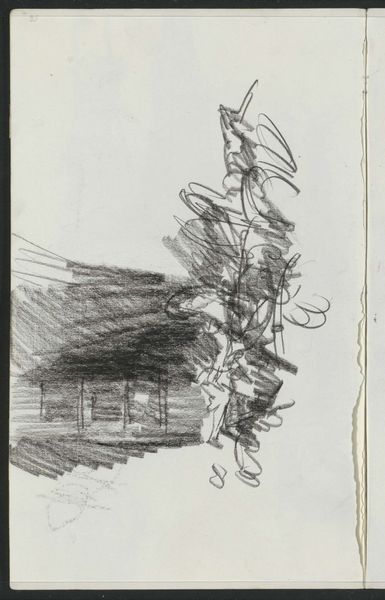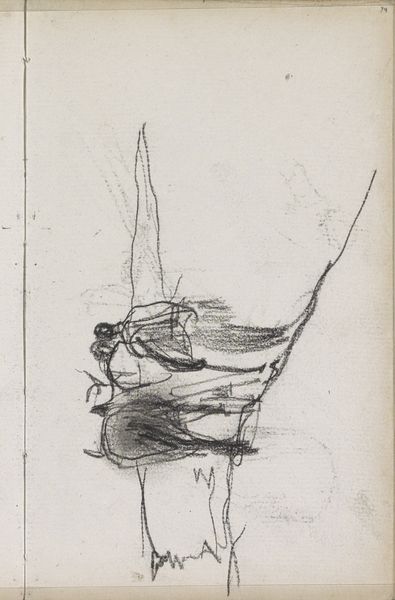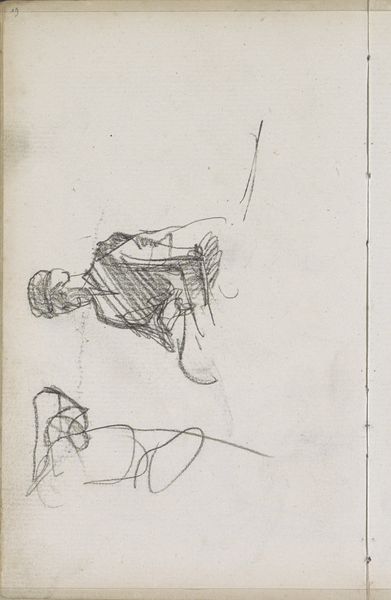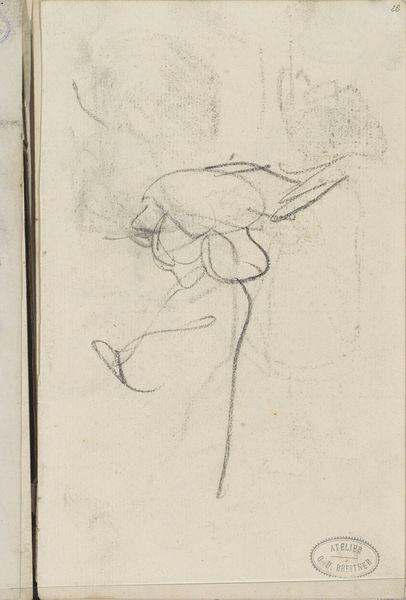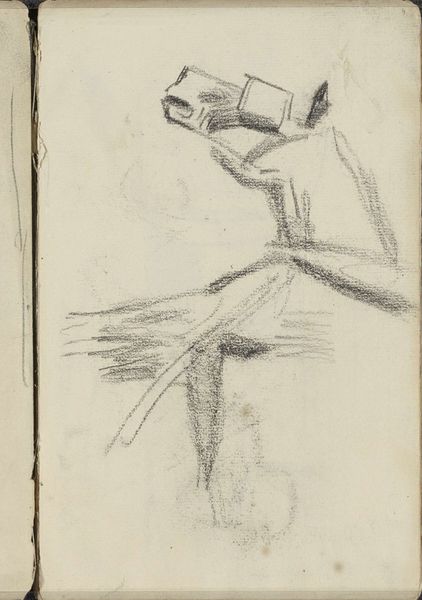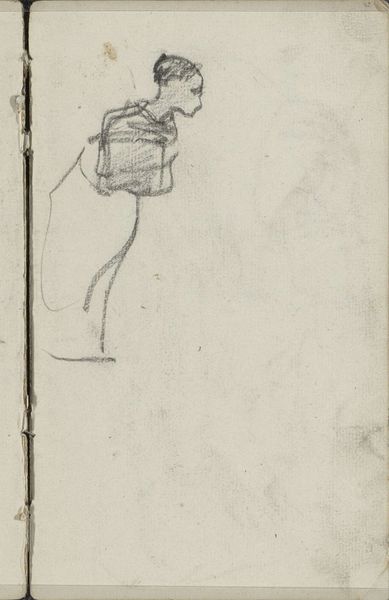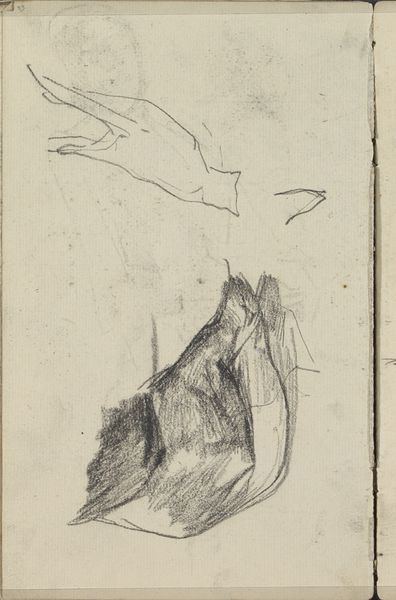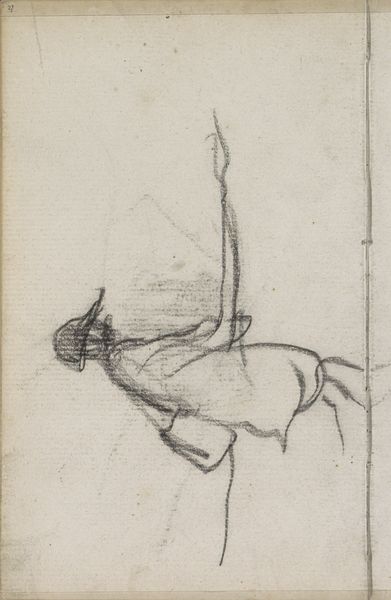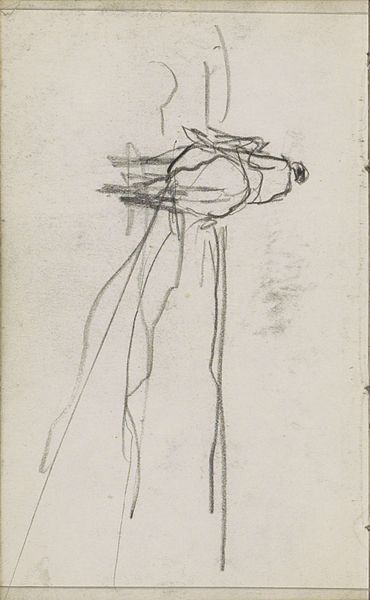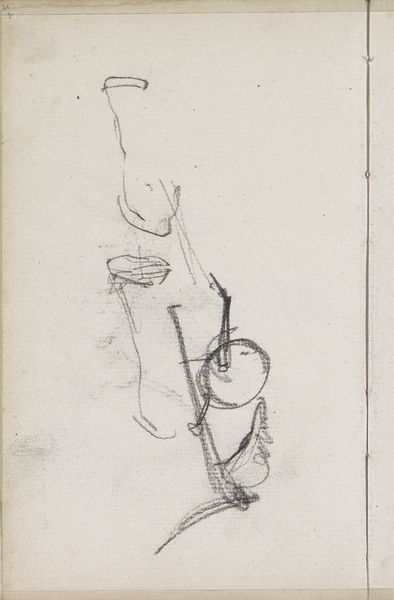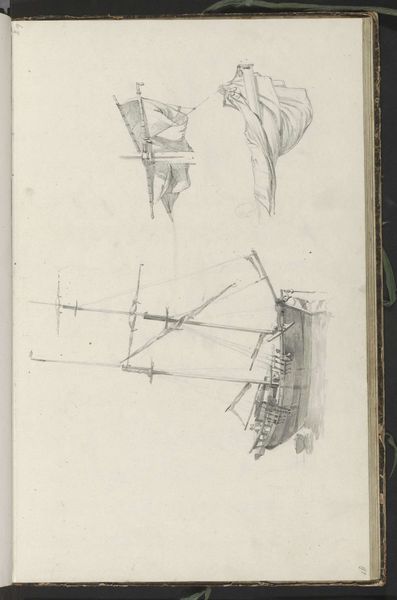
Copyright: Rijks Museum: Open Domain
Editor: So, this is Isaac Israels' "Standing Woman with Hat and Cape, in Profile," likely made between 1875 and 1934. It’s a pencil drawing on paper, and the quick strokes give it this fleeting, almost ephemeral quality. What stands out to me is how little detail there is, yet I still get a sense of movement. What do you see in this piece? Curator: What I see is a ghost of an image, or maybe an apparition. Note the strategic blurring; the sharp angular marks which become amorphous shadow; the heavy shading dissolving upwards. There's an archetypal feminine form hinted at beneath these suggestive symbols: the hat, the cape, all communicating ideas of power, protection, and perhaps even mystery. Where might this woman be going? What sort of agency do you suppose she might wield in public society, masked by privilege? Editor: I hadn’t really considered the symbols in that way, focusing on their material reality, so thanks! Curator: Materiality, however, can itself become symbol! What feelings are invoked by the lack of concrete detail; that which we might project *onto* this powerful woman striding from the page into the world? Editor: That's a great point! The ambiguity definitely makes it more engaging. I almost want to know more about her story because she isn’t fully revealed. It’s a subtle kind of engagement, leaving open possibilities. Curator: Precisely. Think about how portraiture through history has functioned. Usually it freezes a powerful person in time as a commemoration; an exercise in control and memory. In contrast, here Israels gives us more liminal, permeable boundaries; an intersection between visibility and erasure. What is remembered, and what remains invisible? How much agency, culturally and politically, exists within those lines? Editor: It's fascinating how a seemingly simple sketch can hold such complex layers of meaning. Thanks! Curator: Indeed! By recognizing familiar elements like hats and coats, yet having their associations flipped – through impermanence or the unknown – these visual symbols take on even greater psychological depth and invite interpretation.
Comments
No comments
Be the first to comment and join the conversation on the ultimate creative platform.
